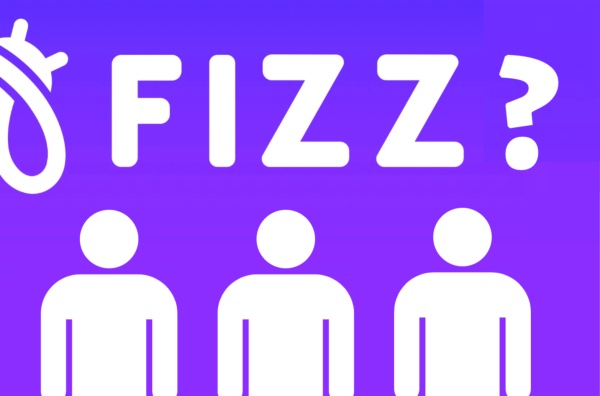In a fluorescent, 500-person lecture hall, a flash of purple lights up a student’s phone. It’s 1:12 p.m. and there are eight minutes left in Wednesday’s CS 106A lecture.
In the front row, a student has already packed up her stuff, diverting her attention to a purple logo on her phone. Next to her, a friend is rapidly typing, pausing only to hit send — his post now visible to all of Stanford.
The app is Fizz. And it’s everywhere.
When Stanford dropouts Teddy Solomon and Ashton Cofer co-founded Fizz in the midst of the COVID-19 pandemic, the goal was clear: rebuilding community in the absence of proximity.
A platform best described as a Twitter-Reddit hybrid, Fizz rapidly gained traction on campus, with a supposed 95% of undergraduate students tapping into its anonymous platform for a variety of uses — relationship advice, homework venting, social announcements and more. In the three years since its inception, Fizz has grown to over 80 college campuses across the country.
The answer to Fizz’s success is three-fold, according to Sunny Xun Liu, the director of research at the Stanford Social Media Lab. Liu said Fizz’s popularity is due to its connection to a defined hub, its cyclical self-sustainability and its fully anonymous interface.
“There is a defined structure and shared identity in place already” on campus, Liu said. “They have an organic and natural way of welcoming new users each year who are excited to join the community, who have questions, who want to know what Stanford is like.”
Fizz’s culture of anonymity also makes it especially appealing, students said.
“Being at a place like Stanford, there’s almost a feeling that you need to have all the answers, you need to know what you’re doing, you need to have your shit together,” said Sebastian Strawser ’24, who writes for The Daily. “The anonymity helps with that, in my opinion. It humanizes Stanford in a way.”
Anonymity, however, is a double-edged sword, according to Kai Hammond ’27, a Fizz moderator. He said that due to the platform’s anonymous identity, “a lot of people let their inner evil come out.”
“I’ve seen a lot of messed up things on Fizz — bullying is definitely more prevalent just because people don’t experience an immediate consequence,” Hammond said.
Moderators like Hammond were recruited by Fizz to regulate the daily stream of content. Fizz has student moderators at each school where the app is active. Hammond joined Stanford’s Fizz moderating team in October, only one month into his time at Stanford, during which he was an active user of the app.
To become a moderator, Hammond said he had to take a “Fizz University online course that taught me how to review content. They had a whole system down.”
User-issued reports are assigned to two initial moderators, opening a two-minute window to respond before offering the report to another moderator. The system is designed to be streamlined, enforcing constant oversight over users’ respect for the platform’s designation between free speech and bullying.
In the past year, Fizz’s role on campus has begun to extend beyond a communal space for complaining, course recommendations and computer science memes. It has taken shape as a student-driven feedback engine, galvanizing the voices of the Stanford community and sparking discussions of institutional change, students said.
Strawser said that Fizz enables student mobilization, citing Stanford’s “war on fun,” a build-up of student frustration with the Stanford administration’s perceived sterilization of a once-vibrant social landscape.
ASSU President Sophia Danielpour ’24 and Vice President Kyle Haslett ’25 ran on a platform entitled “Fun Strikes Back.” In the months leading up to the election, Fizz existed as a nexus of campus dialogue, with students discussing administrative procedures on event approval, Greek life and general bureaucracy on campus.
“People who normally wouldn’t agree on stuff came together on Fizz in an anti-admin type of campaign which … played a big role in how the current ASSU executives got elected to office in the first place,” Strawser said.
Student organizations have also found value in Fizz’s broad audience. Sophomore class president Aili McGregor ’26 uses Fizz as an advertising platform. She noted that unlike advertising events to frosh, who mostly live together in all-frosh dorms, reaching large groups of upperclass students can be difficult.
“It’s really nice to post an announcement — about our sophomore formal, for example — and it gets a couple thousand up-votes and everyone sees it,” McGregor said.
The sophomore presidents, alongside other student organizations, regularly use the platform to publicize social events or run polls. McGregor said that registration for sophomore formal, for example, jumped from 50 students to roughly 700 after a series of announcements on Fizz.
An earlier version of this article incorrectly stated that moderators were “hired” by Fizz, not “recruited.” The Daily regrets this error.
